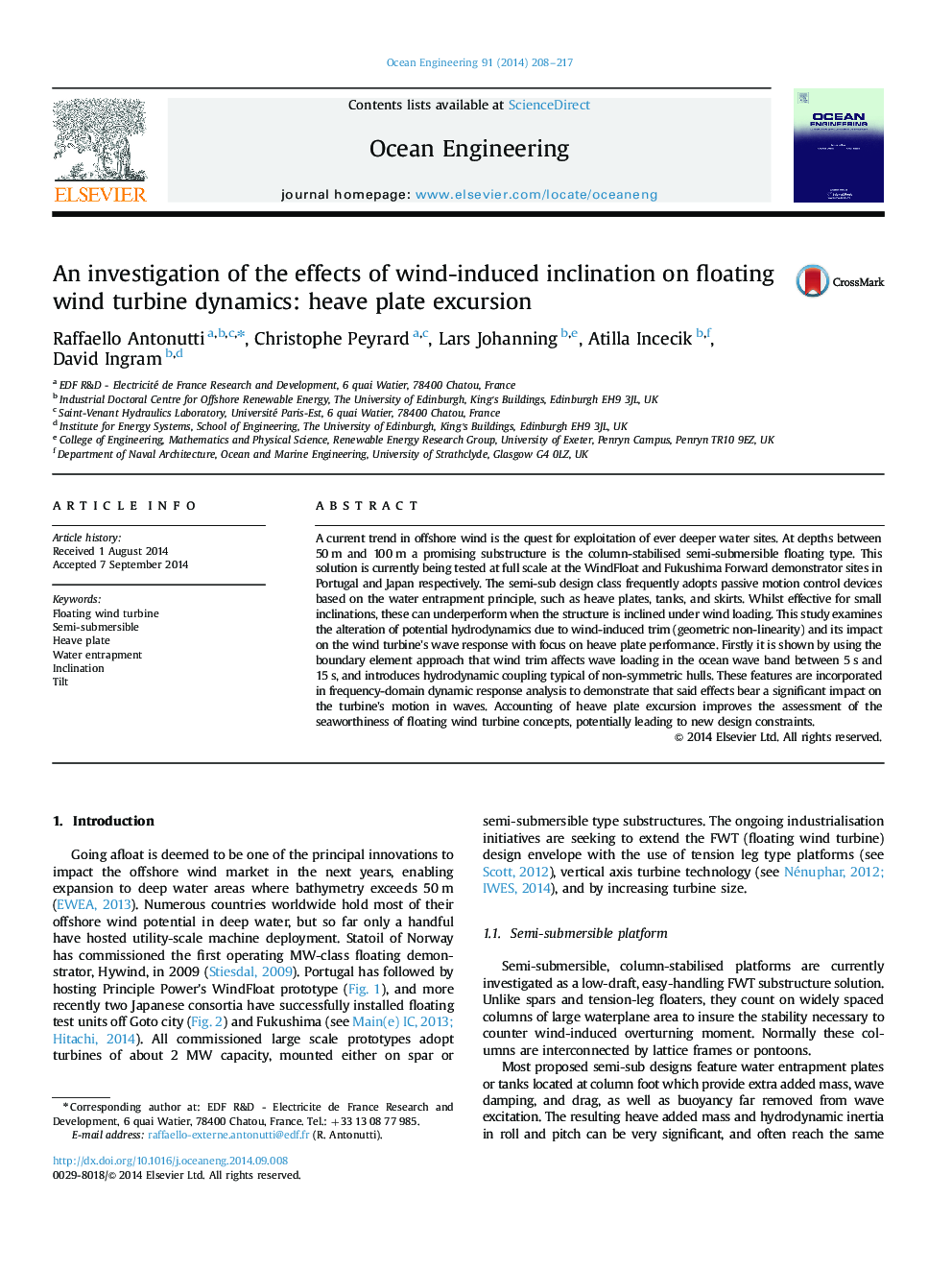| Article ID | Journal | Published Year | Pages | File Type |
|---|---|---|---|---|
| 8066127 | Ocean Engineering | 2014 | 10 Pages |
Abstract
A current trend in offshore wind is the quest for exploitation of ever deeper water sites. At depths between 50 m and 100 m a promising substructure is the column-stabilised semi-submersible floating type. This solution is currently being tested at full scale at the WindFloat and Fukushima Forward demonstrator sites in Portugal and Japan respectively. The semi-sub design class frequently adopts passive motion control devices based on the water entrapment principle, such as heave plates, tanks, and skirts. Whilst effective for small inclinations, these can underperform when the structure is inclined under wind loading. This study examines the alteration of potential hydrodynamics due to wind-induced trim (geometric non-linearity) and its impact on the wind turbine׳s wave response with focus on heave plate performance. Firstly it is shown by using the boundary element approach that wind trim affects wave loading in the ocean wave band between 5 s and 15 s, and introduces hydrodynamic coupling typical of non-symmetric hulls. These features are incorporated in frequency-domain dynamic response analysis to demonstrate that said effects bear a significant impact on the turbine׳s motion in waves. Accounting of heave plate excursion improves the assessment of the seaworthiness of floating wind turbine concepts, potentially leading to new design constraints.
Related Topics
Physical Sciences and Engineering
Engineering
Ocean Engineering
Authors
Raffaello Antonutti, Christophe Peyrard, Lars Johanning, Atilla Incecik, David Ingram,
